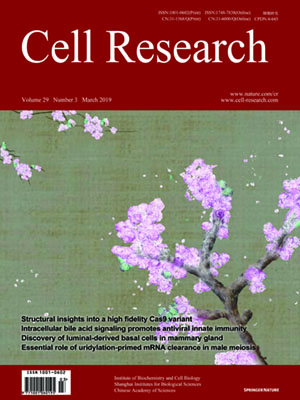
Volume 29, No 3, Mar 2019
ISSN: 1001-0602
EISSN: 1748-7838 2018
impact factor 17.848*
(Clarivate Analytics, 2019)
Volume 29 Issue 3, March 2019: 254-257
LETTERS TO THE EDITOR
SENP6-mediated M18BP1 deSUMOylation regulates CENP-A centromeric localization
Hang Fu 1,2,3, Nan Liu 2, Qiang Dong 2, Chunxiao Ma 3, Jing Yang 2,Jun Xiong 2, Zhuqiang Zhang 2, Xiangbing Qi 3,Chang Huang 2 and Bing Zhu 2,4
1 College of Biological Sciences, China Agricultural University, 100094 Beijing, China; 2National Laboratory of Biomacromolecules, CAS Center for Excellence in Biomacromolecules, Institute of Biophysics, Chinese Academy of Sciences, 100101 Beijing, China; 3National Institute of Biological Sciences, 102206 Beijing, China and 4College of Life Sciences, University of Chinese Academy of Sciences, 100049 Beijing, China
These authors contributed equally: Hang Fu, Nan Liu.
Correspondence: Bing Zhu (zhubing@ibp.ac.cn)
Dear Editor,
Centromeres are critical for the faithful inheritance of genetic information during cell division and maintenance of centromere identity is vital for genome integrity. The identity of centromeres is epigenetically determined by centromere-specific histone H3 variant,1 which is termed CENP-A in mammals. Unlike canonical histones that are incorporated into chromatin during S phase in a replication-dependent manner, CENP-A is incorporated into centromeric chromatin during G1 phase in mammals.2 Several regulators critical for CENP-A deposition and centromere identity have been identified,3,4,5,6 but additional regulatory factors likely exist. We devised a genome-wide RNAi screen using an siRNA library (Human Whole Genome siRNA Set V4.0, Qiagen) targeting ~19,000 human genes to identify factors regulating CENP-A localization in human cells.
https://doi.org/10.1038/s41422-018-0139-y
FULL TEXT | PDF
Browse 1357


